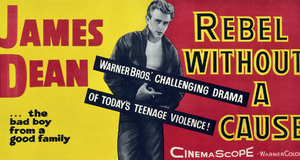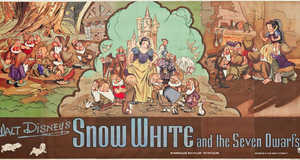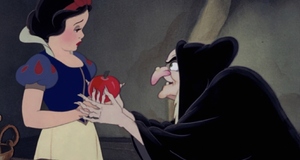A Contemporary Analysis of Action Films with Female Leads
By
2016, Vol. 8 No. 09 | pg. 2/2 | « Androgynous Costume: Degendering the Female StarIn “Visual Pleasure and Narrative Cinema,” emphasis is placed on the male character look and how this affects the male spectator. As a result, a number of feminist film theorists have tackled the looming question of “Where do women spectators fit into all this?” In her article “Film and the Masquerade,” Mary Ann Doane delineates how women are not distanced enough from the diegetic space, and as a result are effectively “evicted” from scopophilic looking. She writes, “The woman who identifies with a male character must adopt a passive or masochistic position, while identification with the active hero necessarily entails an acceptance of what Laura Mulvey refers to as a certain ‘masculinization’ of spectatorship” (Doane 48). In other words, women spectators have no choice but to align themselves with the men onscreen, which renders the woman complacent. Doane goes on to proclaim the malleability of a woman’s gender identity: while men are “locked into sexual identity,” women can perform as the opposite sex with little to no consequences. Thus, to deal with the problem of exclusion from pleasurable looking, Doane suggests women have two possible outlets: transvestitism or masquerade. While transvestitism is rather self-explanatory—in this case it means the wearing of clothing of the opposite sex—the idea of masquerade is a bit more complicated. Doane describes it as “constituted by a hyperbolization of the accoutrements of femininity” (49), which is to say that masquerade is defined as an excessively saturated feminine identity. In this section, I seek to explore how these four films both take up and challenge Doane’s argument. Both of said outlets—transvestitism and masquerade— are deployed at different points in the films, but ultimately, the so-called “fight uniforms” these four female protagonists don fall somewhere in the middle of the two. That is, in particularly action-packed scenes, these women do not quite register as hyperfeminized or particularly masculine, but more androgynous, possibly even degendered. While Beatrix, Furiosa, Geum-ja, and Lisbeth may change costumes throughout the films, they each have one defining outfit—a uniform of sorts—that may most accurately be described as gender neutral.For Kill Bill’s Beatrix Kiddo, the “uniform” is a bumblebee-yellow suit she wears to fight O-Ren Ishii and her posse. Although the form-fitting suit may be considered by some as sexy, it is undeniably an homage to Bruce Lee in Game of Death (1978), which immediately establishes the gender neutrality of the outfit, and subsequently, the gender neutrality of Beatrix in these fight scenes. Geum-ja, of Lady Vengeance, may be considered the most feminine of the four women. There is, however, a shift in how she presents herself throughout the film. In the beginning of the film, in a flashback to when Geum-ja is first arrested and her portrayal in the media, there is much attention paid to her looks. A news reporter says, “The whole nation was shocked by her youth; her ruthless methods... and by her unabashed naivety... But what shocked us more were her beautiful looks.” Geum-ja’s appearance is undeniably fetishized, but this type of fetishization is only temporarily unsettling, insofar as Geum-ja possesses the agency to turn the fetishization on its head and use it to her advantage. By the end of the film, she willfully adopts an all-black attire. In perhaps the most memorable scene, which takes place in an abandoned school house, Geum-ja dons an all-black suit that covers part of her face. In this example, though there may not be an exact “degendering” of Geum-ja, there is definitely an obscuring of identity and appearance. She ultimately controls how much others see of her—which is a dramatic shift from the conditions of the determining male gaze in which women have nearly zero agency over the presentation of their bodies to others. In The Girl with the Dragon Tattoo, Lisbeth teeters toward hardcore androgyny, if not punk or even butch. She wears only dark clothes, has a number of piercings and tattoos, and short black hair. In the film, she even sleeps with both a man and a woman, displaying a tangible example of the bisexuality evident in the other films only in costume. Finally, Imperator Furiosa of Mad Max: Fury Road wears the same androgynous outfit for the duration of the film: brown t-shirt, dark pants, combat boots, a number of belts. This outfit is not unlike the uniform donned by Immortan Joe’s “war boys,” in the film, with the exception that the men are shirtless. Furiosa’s hairstyle and makeup only intensify her androgyny: she wears a buzz cut and dark charcoal-like makeup on her forehead that resembles war paint. These factors, which work to erase Furiosa’s curves and make her appear more rugged, are in complete opposition to hegemonic conventions of beauty. This “deglamorization” of the traditionally glamorous Charlize Theron, however, does not deter us from watching the film. That is to say, that we still enjoy watching Furiosa, which tempers the possibility of a spectatorial pleasure not influenced purely by conventional aesthetics. In Fabrications: Costume and the Female Body, a collection of essays concerning costume and women in cinema, there is an essay by Gaylyn Studlar titled “Masochism, Masquerade and the Erotica Metamorphosis of Marlene Dietrich.” Here, Studlar illuminates the ways in which film can create subversive pleasures that challenge former notions of desire and heteronormative gender roles. She specifically refers to the classic cross-dressing example of Marlene Dietrich, writing, “In donning male attire, Dietrich transforms the spectacle of female representation into a ritualized acting out of bisexual identification... the limits of a single gender identity and one body-ego are pleasurably transcended” (Studlar 247). The key here is that Dietrich plays the lead role, taking over the previously male-dominated position. Studlar then writes, “Without a strong controlling male gaze situated within the diegetic space, the image of Dietrich is brought into a fetishistic ‘direct erotic rapport with the spectator’” (248). Indirectly taking Mulvey to task, Studlar seems to suggest that the absence of a dominating male figure in tandem with Dietrich’s sexual ambiguity may actually work to challenge heterosexual norms. It can be argued that Dietrich and these four women, although decades apart, all participate in this transformation of female representation that transcends gender. In donning androgynous clothes, these four women provide the opportunity for an uninhibited gaze, one impartial to the heteronormative conventions originally professed by Mulvey. Jane Gaines chimes in on this topic in the intro of Fabrications: Costume and the Female Body with the argument that, “Feminist film theory begins with the female body. Since this body has been understood as totally constructed by a patriarchal cinema, the first difficulty for feminist film theorists has been to see if the connotations of sexuality it carries could be peeled off [...]” “But,” she continues, “this is as futile a project as trying to scrub the streets clean on our hands and knees” (Gaines 7). Although Gaines believes that female bodies and sexuality are intrinsically linked, I argue that the women of Kill Bill, Mad Max: Fury Road, Lady Vengeance, and The Girl with the Dragon Tattoo seem to have, if not undone this seemingly undoable tie, significantly lessened its grip. This argument now poses a dilemma, however. If the women are now gender neutral and notably desexualized, what replaces them as the focus of the gaze or what is even sexualized in the films? Fetish PropsApproximately halfway through Kill Bill, after Beatrix has escaped her hospital bed and told us the story of her first target, O-Ren Ishii, she decides to acquire some “Japanese steel.” She travels to Okinawa, where she seeks out Hattori Hanzo, the most skilled sword maker in the world. After a short conversation, the two go upstairs, where Hanzo keeps his swords. He tells Beatrix to pick one up. Beatrix, in awe, chooses one sheathed in red. Up until this point, the shot scale has been inconspicuously conventional—composed of a range of medium long shots. Once Beatrix picks up the sword, however, there is an extreme closeup: in what almost feels like slow motion, Beatrix unsheathes the sword. Immediately following, there is a shift back to medium long shot in which we see Beatrix holding the sword. Whereas in earlier film, when women were shown as closeups of parts—a chignon in Vertigo or a tearful eye in Psycho—the shift into the contemporary has brought on a zooming out of sorts; the woman, or Beatrix, is now shown as an entire person, a human subject. A separate zooming in has occurred, but this time on the props. What might easily have been shown as banal objects—for instance, in this case an artisanal sword—are now shown in extreme closeup, emphasized and fetishized. In “Visual Pleasure,” Mulvey extensively delineates the psychoanalytic aspects of film-viewing, which include scopophilic looking and fetishistic looking. While scopophilic looking places more emphasis on the pleasurable aspects of the looking itself (consider a Peeping Tom), fetishistic looking emphasizes the objectification of the woman who is being looked at. Mulvey avers, “One part of a fragmented body destroys the Renaissance space, [...] it gives flatness, the quality of a cut-out or icon[...]” (12). In these four contemporary films, two displacements have occurred: the women have shifted from fetish object to subject and the props from object to fetish. It may first be useful to distinguish between these categories. Subjects are almost always self-aware humans: it is assumed that they have thoughts and feelings, they do things, and they effect change. An object, on the other hand, is exactly what it sounds like—a thing. Objects are passive; things are done to them; meaning is given to them only if they are important enough. Fetish objects may be the most complicated category. According to Sigmund Freud, a fetish is a substitute for what is considered “normal” sex. For Mulvey, however, a fetish is what the woman is transformed into by the male gaze. She is at times a banal and unimportant object, but men also derive sexual pleasure from her through the projection of fantasy. It is important to make this distinction, because the sexual connotation the fetish object carries applies to the role sexualization plays in these films. It is no doubt that Beatrix, Furiosa, Geum-ja, and Lisbeth are all subjects. Each woman drives the narrative action of the film, each woman participates in fights, each woman has a significant number of lines. They are not fetish objects. They hold the look of the spectator too long for this to happen. Instead, the props are turned into fetish objects. In Kill Bill, Beatrix is shown as an entire person—a subject— and the indubitably phallic sword shifts from commonplace weapon to full-blown fetish object. In the other films we see a very similar fetishization of objects of violence. For Mad Max, there is the fetishization of the skull. Skulls are everywhere in Immortan Joe’s kingdom: from the vehicles, to the cave walls, to bodily accessories. They serve as a reminder of the constant looming death and the capabilities of Immortan Joe, who himself resembles a skeleton; but instead of subordinating Furiosa, these objects motivate her, and she changes the narrative, defeating Immortan Joe and his subsequent patriarchal and tyrannical influence. In Lady Vengeance, there is much emphasis placed on a gun. While in prison, Geum-ja is given a special piece of paper from a fellow inmate, and it is not until she is released that she discovers it is part of a blueprint to a pseudo-ethereal gun. The manner in which Geum-ja comes to be in possession of the gun is provocative in its own right, for the paper she receives is only a gun part – an image that only projects. In other words, the traditional analytical editing to break the woman up into parts is now being implemented on the object, breaking it up into a mere assortment of pieces. Finally, in The Girl with the Dragon Tattoo, the weapon that is fetishized is fire. Although this is only the first film of a trilogy, which actually features a film titled The Girl Who Played with Fire, we still get a glimpse of the same type of fetishization. First of all, there is a flashback of a young Lisbeth, who sets fire to her abusive father. Additionally, at the end of the film, after a long car chase, Lisbeth forces Martin, a sadistic torturer and killer of women, off the road and into a collision already ablaze in which there is no escape. The fire is lingered on and emphasized, not for its aesthetic aspects, but to underscore how deeply Lisbeth feels connected to it. When Lisbeth returns to Mikael, and he questions her decision to leave the man in the burning car, she says, “Shut up about the victimization! He almost killed you. He raped and murdered and he enjoyed it. He had the same chances as us to choose what he wanted to be. He was no victim. He was a sadistic motherfucker who hated women.” In a refreshing twist, Lisbeth has managed to use a fetishized object to defeat a man who once tortured and fetishized women. Photographs of sexualized and tortured women found in his prison-like cellar further attest to this. An analysis of fetish objects in these films serves as a fairly tangible example of the ways in which all of these women take control of their own situations— situations in which they may fall prey to the male gaze— and turn them around. These women have not only managed to claim the subject position for themselves, but they have also punished the men who once objectified them. ConclusionIn 1975, Laura Mulvey wrote “Visual Pleasure and Narrative Cinema,” which bridged feminist film theory and psychoanalysis to criticize the dominance of a masculine-centered cinema and its attendant male gaze. For Mulvey, classical Hollywood film is a problematic institution, for it controls and directs the look of the spectator in a way that objectifies women. This specific look—that which is held by the male protagonist—is essentially the male gaze. Although Mulvey professed the ubiquity of the male gaze in Hollywood cinema in 1975, the male gaze has not only remained ubiquitous in film, but seeped into other forms of popular media as well. Over the last several decades, however, there have been several instances of subversion of the male gaze. Here I have focused on the instance of contemporary action films with aggressive female leads. This study analyzed specifically how mise en scene, or everything placed in front of the camera, directs the gaze, with specific subcategories of setting, blocking, costuming, and props. For setting, I analyzed the types of spaces included in the films and drew from anthropologist Marc Augé’s “Non-Places.” Ultimately, I found that deployment of non-places as opposed to places created a certain type of tabula rasa that fostered independence for these women, an independence unadulterated by the connotations that domestic spaces often carry. In the blocking section, I paid particular attention to the power relations within fight scenes. In these films, the lead women fight against men and often win, which is helpful in that it encourages the idea of an even playing field—one in which men and women are entirely equal. Included in the blocking section was the deployment of sexual violence in the films. While many “body genre” films place emphasis on the sadistic victimization of women, these films, although sexually violent at times, turn the situations around and place the power in the hands of the formerly victimized women. For costuming, I demonstrated how attire alone can work to blur the lines of the gender binary. Often in these films (in the fight scenes in particular), the women are dressed in androgynous outfits, which almost de-genders the women entirely. For the props section, I proposed “fetish props,” as objects that replace women as fetishes. In earlier cinema, women were often shown in extreme close up, split up into parts, and sexualized. In these films, however, it is the props— and subsequently, the violence—that are dissected and sexualized instead. Through the conceptualization of a lens rooted in mise en scene, I determined that certain contemporary female-led action films such as Kill Bill Vol. 1, Mad Max: Fury Road, Sympathy for Lady Vengeance, and The Girl with the Dragon Tattoo are not only dramatic departures from the male gaze, but conventional enough in their attachment to the genre to be not only palatable to the masses but also exceedingly popular. ReferencesAndersen, Aaron. "Mindful Violence: The Visibility of Power and Inner Life in Kill Bill." Jump Cut (2004). Augé, Marc. Non-places: Introduction to an Anthropology of Supermodernity. London: Verso, 1995. Bruzzi, Stella. Men's Cinema: Masculinity and Mise en scène in Hollywood. Edinburgh: Edinburgh UP, 2013. Doane, Mary Ann. "Film and the Masquerade: Theorising the Female Spectator." Screen (1982): 74-88. Gaines, Jane, and Charlotte Herzog. Fabrications: Costume and the Female Body. New York: Routledge, 1990. The Girl with the Dragon Tattoo. Dir. Niels Arden Oplev. Nordisk Film, 2009. Kill Bill: Volume 1. Dir. Quentin Tarantino. Miramax Films, 2003. Mad Max: Fury Road. Dir. George Miller. Warner Bros. Pictures, 2015. Mulvey, Laura. "Visual Pleasure and Narrative Cinema." Screen 16.3 (1975): 6-18. Sympathy for Lady Vengeance. Dir. Park Chan-wook. CJ Entertainment, 2005. Williams, Linda. "Film Bodies: Gender, Genre, and Excess." Film Quarterly 44.4 (1991): 2-13. Suggested Reading from Inquiries Journal
Inquiries Journal provides undergraduate and graduate students around the world a platform for the wide dissemination of academic work over a range of core disciplines. Representing the work of students from hundreds of institutions around the globe, Inquiries Journal's large database of academic articles is completely free. Learn more | Blog | Submit Latest in Film & Media |


















